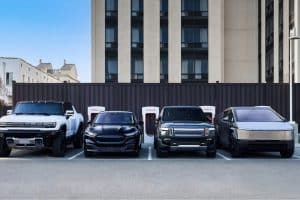- 💼 Carl Jenkins, Cruise’s Senior Vice President of Autonomous Vehicle Platforms, has resigned from the GM-owned self-driving company.
- 🚗 Jenkins didn’t specify the reason for his departure but hinted at documenting his achievements at Cruise in the future.
- 📉 His resignation adds to a series of high-profile departures and staff cuts at Cruise following a pedestrian injury involving one of its driverless vehicles.
- 🧑💼 Former Cruise CEO Kyle Vogt and co-founder Daniel Kan resigned previously, followed by the dismissal of nine executives, including the former COO and Chief Legal Officer.
- 💰 GM announced plans to halve Cruise spending in 2024, aiming to “refocus and relaunch” the driverless ride-hailing company.
In the ever-evolving landscape of autonomous vehicles, one name stands out prominently: Cruise, the self-driving unit owned by General Motors (GM). However, recent events have cast a shadow over Cruise’s trajectory, with a string of high-profile departures leaving many industry insiders and enthusiasts questioning the company’s stability and future direction.
Carl Jenkins’ Resignation: A Symbol of Uncertainty
Carl Jenkins, once the Senior Vice President of Autonomous Vehicle Platforms at Cruise, recently announced his resignation from the company. While Jenkins did not explicitly state the reasons behind his departure, his cryptic message on LinkedIn hints at potential dissatisfaction or a desire for change. This departure marks yet another setback for Cruise, following a series of resignations and staff cuts in the wake of a significant incident involving one of its driverless vehicles.
The Ripple Effect: A Cascade of Departures
Jenkins’ resignation is not an isolated incident but rather part of a broader pattern of executive departures at Cruise. Former CEO Kyle Vogt and co-founder Daniel Kan stepped down prior to Jenkins, signaling potential internal turbulence within the organization. Moreover, the dismissal of nine executives, including the former COO and Chief Legal Officer, further underscores the challenges Cruise is facing.
Navigating Choppy Waters: Cruise’s Response
In response to these challenges, GM, Cruise’s parent company, announced plans to significantly reduce spending on Cruise in 2024. This decision reflects a strategic shift aimed at reevaluating Cruise’s priorities and reallocating resources to ensure its long-term viability. With a focus on “refocusing and relaunching” the driverless ride-hailing company, GM is signaling its commitment to navigating through the current turbulence.
Looking Ahead: The Road to Recovery
As Cruise grapples with internal restructuring and external scrutiny, it is imperative for the company to chart a course towards stability and innovation. Transparency, accountability, and a renewed focus on safety must guide Cruise’s efforts to regain trust and confidence in its autonomous technology. Additionally, fostering a culture of collaboration and empowerment within the organization can help mitigate future challenges and foster resilience in the face of adversity.
Conclusion
The recent wave of executive departures at Cruise has sparked speculation and concern within the autonomous vehicle industry. However, amidst the uncertainty, there lies an opportunity for growth and transformation. By embracing transparency, prioritizing safety, and realigning its strategic priorities, Cruise can navigate through the current challenges and emerge stronger than ever before.





